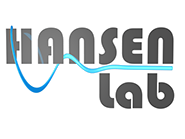

Department of Structural and Molecular Biology
Division of Biosciences
University College London
Darwin Building - Gower Street
WC1E 6BT London, UK
Introduction:
The Sider program analyses carbon side-chain chemical shifts in terms of side-chain rotamer distributions. Two algorithms are currently available.
Only 13C methyl input:
The first one takes as input methyl 13C and gives the rotamer distribution along chi1 for Valine or the rotamer distribution along chi2 for isoleucine and leucine.
Hansen et. al. J. Am. Chem. Soc. 2010, 132(22) pp 7589-7591
Hansen et. al. J. Am. Chem. Soc. 2010, 132(1) pp 42-43
You can use the web interface below to calculate rotamer populations for Ile, Leu, and Val. The script below calculates rotamer populations for side-chain dihedral angles. For Valines, the chemical shifts of Cg1 and Cg2 are converted to rotamer populations of sidechain chi1, For Isoleucine, the Cd1 chemical shift is converted to chi2 rotamers populations, and for Leucine the chemical shifts of Cd1 and Cd2 are converted to rotamer populations of chi2.
The old version, available before August 2019, can be accessed here: Old Version
Detailed analysis of isoleucine:
The second algorithm takes as input the five aliphatic 13C chemical shift of an isoleucine residue and gives the rotamer distribution along chi1 and chi2.
Siemons et. al. Chem. Commmun. 2019, 55(94) pp 14107-14110
You can use the web interface below. First chose if you are providing the secondary structure from a three-dimensional structure (NMR or X-ray) or whether you have determined the secondary structure propensity from Talos-N. When using secondary structure propensity from Talos-N then the number is: 1.0*prop(Helix) + 0.5*proc(Coil) + 0.0*proc(Sheet).
For each isoleucine, you will need to provide on one line with the following input (space separated):
- A name [string]
- The five 13C chemical shifts, 13Ca, 13Cb, 13Cg1, 13Cg2, 13Cd1 referenced to DSS [5*float]
-
A secondary structure propensity.
- A,H for helix, B,S for sheet, or R,C for random coil
- A float between 0 and 1: 0 for beta-sheet and 1 for alpha-helix
Alternatively you can download source code by Lucas Siemons from GitHub